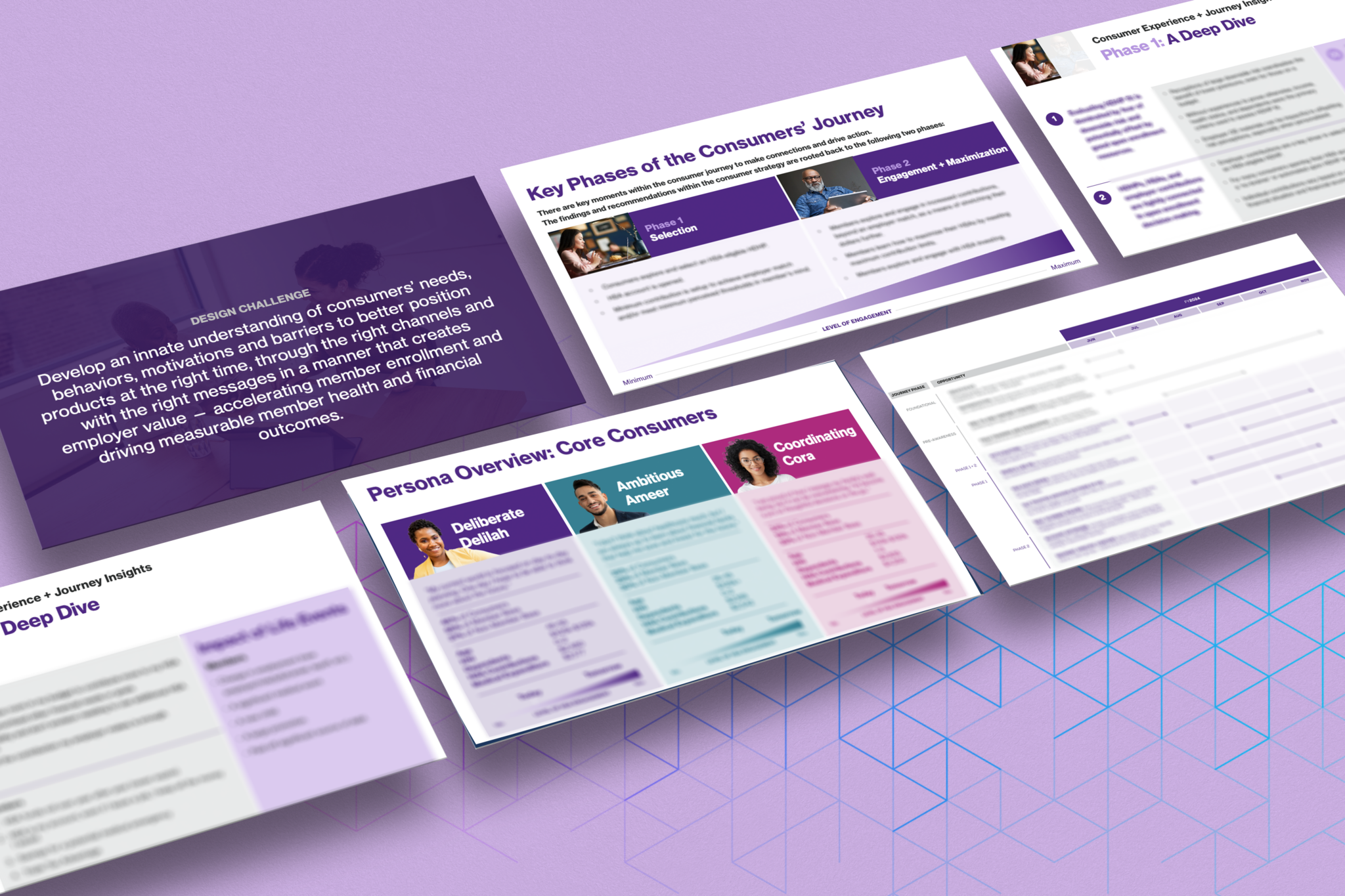
Personas are a design tool to group similar behaviors, preferences, and needs.
Gone are the days of relying solely on surface-level demographics and anecdotes from customer-facing teams to shape strategies and solutions. Understanding who your customers are has become crucial in today’s rapidly evolving business landscape. A survey in early 2022 found that 86% of consumers are willing to leave a brand, even if they had high trust in it, after two bad experiences.
Why? Customers expect you to know them and tailor product and service experiences to them. 73% of consumers expect brands to understand their unique needs and expectations to create a personalized experience.
Personas of the past have consisted of simple demographics that are surface level, which make personalization next to impossible. Instead, the focus of innovation has shifted towards using data-driven profiles of customers or personas. Building personas that are behavior-centric provide actionable insights for creating products, services, and messaging.
By conducting qualitative research, augmented with quantitative research, organizations can better evaluate consumer needs, behaviors, motivations, and barriers and design new solutions with quantified confidence. This article explores the benefits of data-driven personas and provides an essential guide to creating them.
This is an exciting time for using customer data to understand the similarities and differences in human needs and behaviors. Researchers can now capture a wealth of user data that is beneficial in crafting differentiated solutions. Companies can then use this data to create customized user experiences tailored to specific personas. This can help to increase customer engagement, loyalty, and satisfaction.
Data-driven personas confirm the validity and uniqueness of different customer groups. Using algorithms, like K Means Analysis, which we will cover later, differences and similarities can be compared to ensure the accuracy of persona clustering.
Understanding the differences between the unique groups makes it easier to know what value propositions to highlight to encourage and activate customers. The goal is higher conversion rates, more engaged customers, and a better overall customer experience.
Combining qualitative and quantitative data to create the personas can help organizations empathize with their customers. Starting to empathetically design experiences, products, and services is a cornerstone of Human-Centered Design. And empathetically designed experiences are twice as valuable as customer satisfaction.
Ultimately, data-driven personas will give your organization confidence in its strategies, designs, and implementations. It provides a north star backed by facts, not just a hunch. You’ll spend less time questioning and more time innovating, so we recommend starting with data-driven personas.

Data-Driven Persona Socialization Deck (Read Case Study Here)
We’ve distilled this foundational process down to four key activities.
1. Qualitative Research
The goal of qualitative interviews is to understand consumer attitudes and usage of your products. When you can identify specifically how your target audiences use your product, it’s easier to form points of value that resonate.
2. K Means Analysis
Utilize the powerful technique of K-means analysis to cluster customers based on their shared characteristics. This algorithmic third-party approach identifies distinct persona groups within the customer base and their specific behaviors.
3. Synthesize
Analyze the data to identify patterns and commonalities within each persona group. Define each persona based on their unique characteristics, motivations, needs, and pain points. This step brings personas to life and creates a foundation for strategic decision-making.
4. Strategize
With the new data-driven personas, it becomes easier to identify prospects and tailor experiences to their specific attitudes, needs, and motivations.
You get the best of both worlds because your created personas are now algorithmically driven. You now have a deeper understanding of your consumers or customers, removing biases by testing assumptions at scale and using a third-party machine to cluster and sort. This results in teams across the organization being more confident in creating experiences they know will resonate with prospects and current customers.
We asked our VP of Client Services, Taylor Livalska what his recommendations are for organizations creating data-driven personas. Here’s what he suggested:
1. Understand the personalization capabilities of your current technology suite
Before you get started, do a quick audit of your tech suite’s capability. It can be really frustrating to go through all the work of persona creation only to find some of the personalization elements you want to implement are not feasible. Understanding your capabilities, what data you need, and how you plan to combine those two is imperative.
2. Be familiar with your organization’s value propositions
Having hypothesized drivers that are specific, unique, but also exhaustive will provide a bank of benefits you can tap into when creating personalized experiences. It’s okay if you have a lot! In a recent project, our client had 15-20 unique value points for each service.
3. Hit the sweet spot of 3-7 unique clusters
You’ll see a diminishing return in creating too many persona clusters. Depending on your data set, we’ve found that 3-7 yields the best results. A great benefit of K Means Testing is that you can say how many segments you want, and the model will do the math for you!
These tips can meet your organization where you are on the personalization maturity spectrum. We recommend doing a quick gut check before starting so your personas can best serve your organization and the likelihood of implementation is high.
Creating data-driven personas aligns teams on what your organization talks about to who and at what time. It helps develop and foster empathy for your customers’ perspectives, preferences, and needs. Data-driven personas also help remove biases and provide a data-backed understanding of what drives your customer’s behaviors. Overall, we highly encourage the adoption of data-based personas because it is a tool that is an easy entry point for organizations early in creating a more personalized CX strategy, and personalization complexity can grow along with organizations.
We have a deep knowledge and expertise co-creating data-driven personas alongside our clients. Here are a few case studies to continue your reading.

Persona examples from an Social Determinants of Health Project